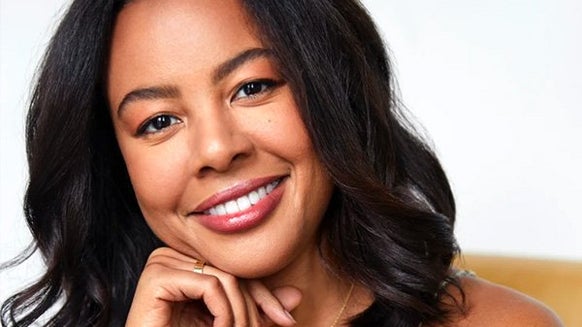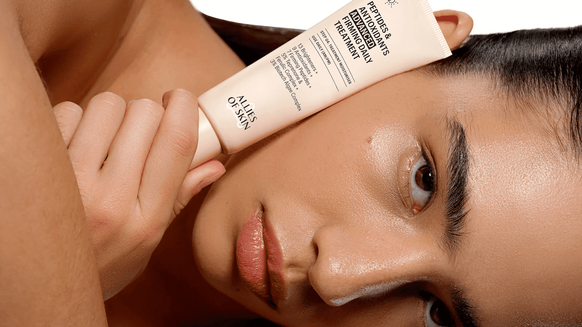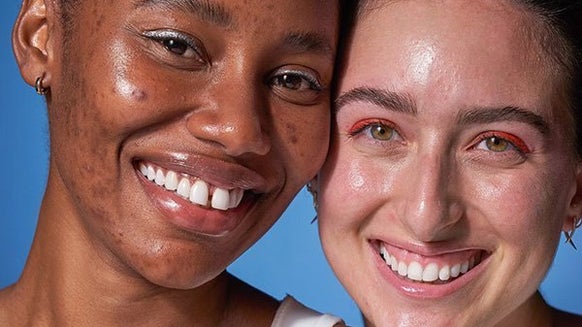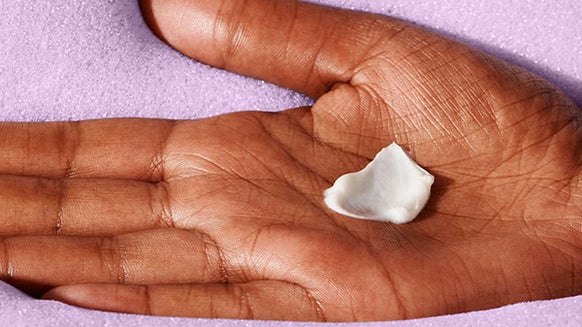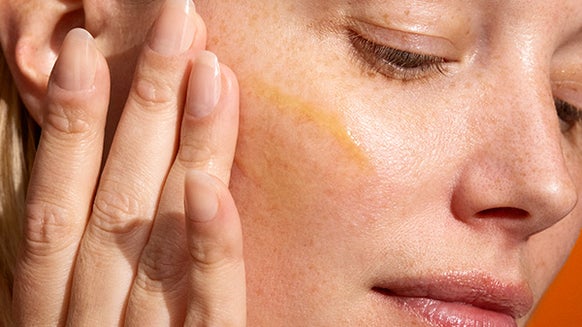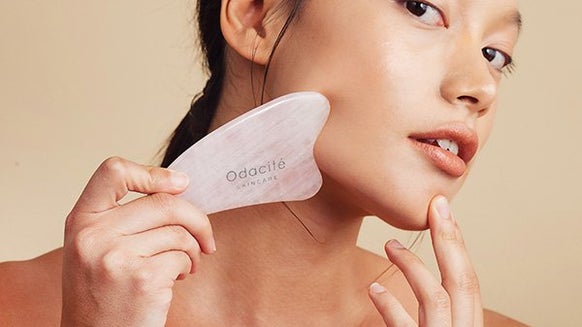MEET DR. LUKE EVANS — THE MAN BEHIND OUR MISSION
A GP turned MP, Dr. Luke Evans is harnessing his experiences as a doctor to push for new guidelines surrounding the ways in which imagery is digitally manipulated in the post-production process — distorting reality and perpetuating unrealistic, potentially harmful ideals that play a significant role in our unhealthy culture of comparison. Eager for greater transparency when it comes to model imagery and the undisclosed ‘tweaks’ that are made to the bodies we see on our screens, our billboards and the pages of our magazines, we spoke to Dr. Luke about the Body Image Pledge and how he became such a passionate ambassador for change within the way these alterations are declared.
{Dr. Luke Evans} Before becoming the Member of Parliament for Bosworth in 2019, I spent 12 years as a doctor, qualifying as a GP in 2013. As a GP, I saw first-hand the effects that social media and digitally altered images can have on a person’s relationship with their body image and mental wellbeing. With an estimated 1.25 million people in the UK suffering from anorexia or bulimia; over one million people with Body Dysmorphic Disorder and anywhere between 500,000 and one million people using anabolic steroids, it’s a growing problem that needs our attention.
This is all about honesty. For example when you go to buy a house or rent a flat, you can change the lighting and paint the walls but you can’t digitally make the kitchen bigger or the garden longer in your advert because, in reality, it doesn’t exist. It’s the same with images where a person’s body proportions have been digitally manipulated.
{DR.LE} The Body Image Pledge is a voluntary commitment that brands, companies, organisations, influencers and celebrities can take to say they will not digitally alter a person’s body proportions in any of their direct imagery. It’s a promise to not, for example, make a person’s waist slimmer, biceps bigger or widen a ‘thigh gap’.
Research on the impact of social media and distorted images is substantial, and alarming. Figures from Girlguiding show that 51% of 7–10-year-old girls feel ‘very happy’ with how they look. But by age 11-16, when most girls start to use social media, this drops significantly to just 16%.
If we don’t act soon to foster healthier representations of body image, more and more people will be impacted by its damaging and long-lasting effects.
{DR.LE} That’s absolutely right. The old saying: “be the change you want to see” springs to mind. Brands need to lead, not be dragged, which is why I’m so pleased that Cult Beauty is stepping up and helping to lead on this issue.
If they haven’t yet, I would urge any companies, brands and organisations to sign the Pledge. WIth more and more companies on board, we can demonstrate the collective ambition of keeping our images and advertising honest.
{DR.LE} That’s right. If made law, the Digitally Altered Body Images Bill would state that any brand, influencer or celebrity should place a label on images when they have digitally manipulated a person’s body proportions and shape — much like the product placement ‘P’ or including #ad in the captions of sponsored posts.
Ultimately, I hope you will never see a label because companies will choose not to alter body proportions in the first place. But, should they do so, the label will help us to quickly distinguish between what’s real and what isn’t.
Fashion and beauty brands, celebrities and influencers hold great sway online and by making this small change they have the opportunity to realign the societal expectations that put immense pressure on us to look a certain way.
{DR.LE} In my GP surgery I was seeing a lot of young men asking for prescriptions to ‘bulk up’, as well as a lot of young women concerned about their weight, their shape and what they ‘should’ look like. Social media has created a warped sense of reality that doesn’t exist. I have had young women come in with an image on social media, saying “How can I look like this?”
Poor relationship with body image is not a new phenomenon, but the advent of social media sites means the frequency, number and type of images pushed and targeted to the end user is. If you like a few photos of someone in the gym, your timeline fills with edited images of physically ‘ripped’ men, some of whom have taken image and performance-enhancing drugs to ‘maximise’ their muscularity. But how, if you’re quickly scanning your timeline, do you know whether the person in the image has used steroids to achieve that look? Or edited their body proportions through Photoshop or apps like Facetune? The problem is, you don’t.
People of all ages and political persuasions, whether they’re just entering their teenage years or are grandparents concerned about the impact of social media platforms such as Instagram and TikTok, recognise the need for change, but if companies don’t act soon, I believe Government must step in. Norway already has legislation in place and France recently announced plans to do the same. I’ve also been encouraged to see this recognised in the Women’s Health Strategy and as recommendations from the Health Select Committee and Women and Equalities Committee.
{DR.LE} As I said before, I hope ultimately to never see a label. The label itself is not the outcome, but the choices made by the company in what they post online or use in advertising.
We live in a time when people are holding companies, social media platforms, celebrities and their peers to account more than ever before. I was a member of the Health Select Committee when it carried out an inquiry into body image and will always remember the evidence given by one of the lived-experience witnesses.
The person in question lives with Body Dysmorphic Disorder — something which affects around one million people in the United Kingdom, and was talking to my colleagues and I about her experience as a fitness influencer on social media who had altered her images to achieve a certain appearance.
I asked her whether, on the basis that there was a law which dictated she had to place a label on any imagery when she had digitally edited her body proportions, she would still edit her images? The answer was a resounding “No, I wouldn’t want people to know I was editing my images.”
People want to give the impression on social media that they look a certain way. Having to add a label tells the viewer that something in that picture doesn’t exist in reality. My genuine belief is that, due to societal pressure, companies won’t want to be seen to be digitally altering someone’s body proportions because of the damage we know it’s causing so, will choose not to alter. But if they do, the label will enable the consumer to hold them to account and decide which companies they want to support.
{DR.LE} There have always been, and there always will be, pressures. We need to accept that. However, what we can do is equip young people with the tools and knowledge they need to navigate the world, protect themselves and make better decisions. To support this, we need institutions and companies to act responsibly and provide opportunities to learn these skills.
Collectively, well-equipped young people, furnished with quality life tools from institutions such as schools, responding to a world that has responsible companies and organisations which foster positive environments, gives our society a chance to tackle ‘toxic’ culture. We all have a part to play and can do so by leading by example.
{DR.LE} This is simple. First, we can be kinder to each other and, perhaps, most importantly but arguably, more difficult to practice, to ourselves. The words we use carry so much meaning. As wonderful as it is to be told you look nice, it’s often the slight criticisms that stay with you and have a longer lasting effect.
Second, take responsibility. If everyone takes responsibility for their words, actions and behaviour, we will see a change. I believe this wholeheartedly.
Thank you so much Dr. Luke! Click here to learn more about what we’re doing to champion the Body Image Pledge, to read our Open Letter and to show your support for the movement. There’s a great deal of work to be done but we’re proud to be doing our bit to push things in a better — not to mention a safer — direction.
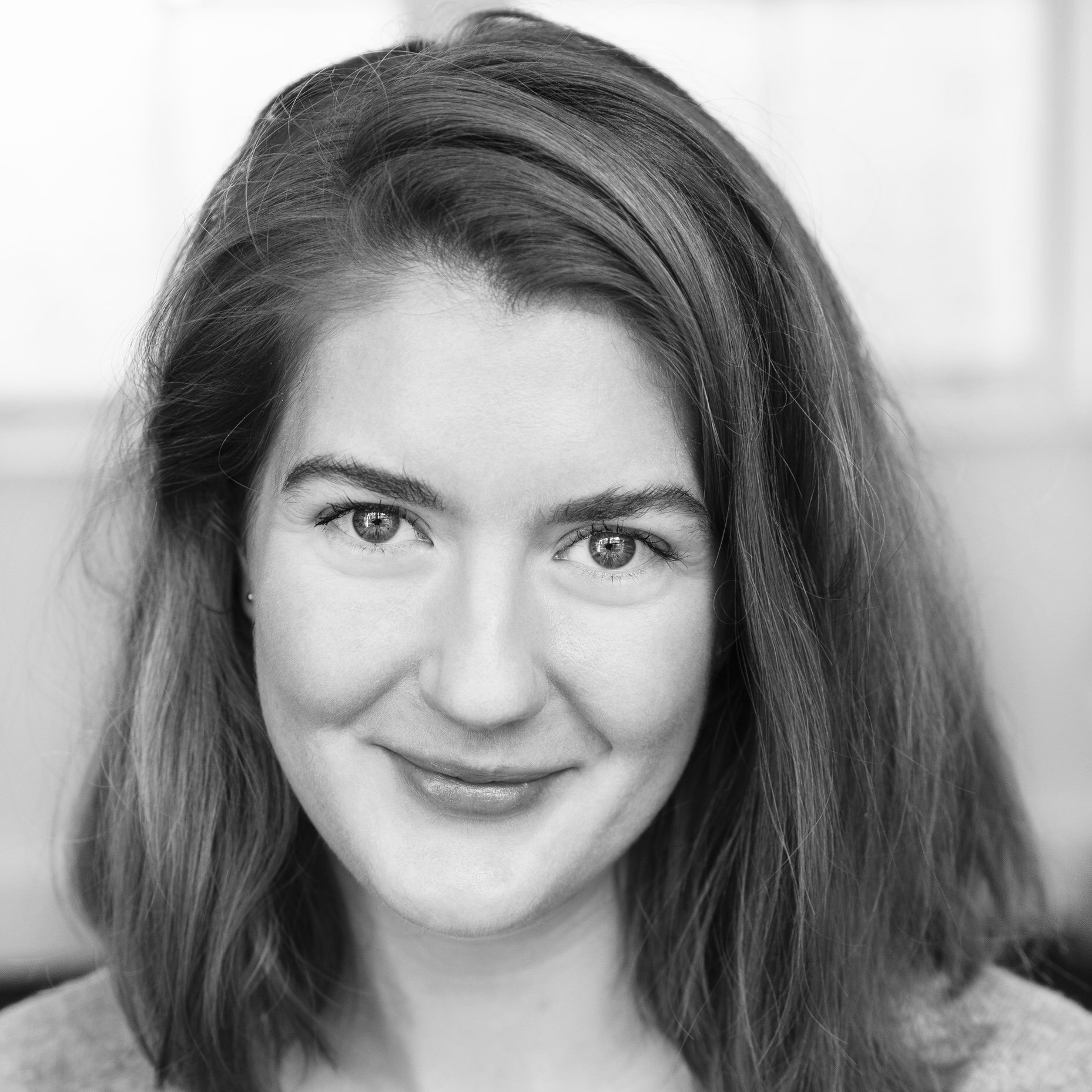
Cult Beauty’s Content Editor and a Cult Beauty OG, Verity loves nothing more than the marriage of language and lip balm. A quintessential Libran, she’s a self-professed magpie for luxury ‘must-haves' and always pursuing the new and the niche — from the boujee-est skin care to cutting-edge tech. Balancing an urge to stop the clock with her desire to embrace the ageing process (and set a positive example for her daughter), Verity's a retinol obsessive and will gladly share her thoughts about the time-defying gadgets, masks and treatments worth the splurge...
